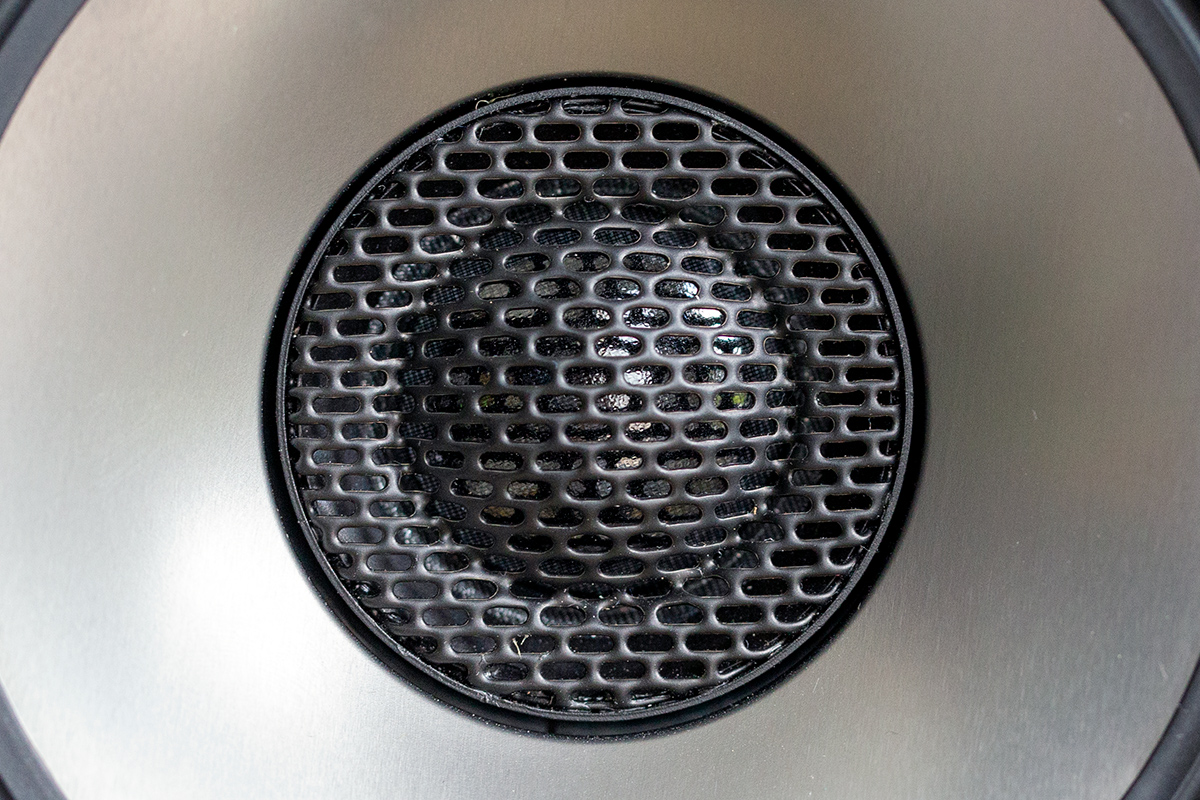 In her song “Big Yellow Taxi,” Joni Mitchell famously observed “That you don’t know what you’ve got / Till it’s gone.” There’s a lot of truth in that. The converse is equally true -- you don’t know what you’ve been missing till you experience it. Both thoughts occurred to me as I reviewed Elac’s Navis ARF-51 active floorstanding speakers.
In her song “Big Yellow Taxi,” Joni Mitchell famously observed “That you don’t know what you’ve got / Till it’s gone.” There’s a lot of truth in that. The converse is equally true -- you don’t know what you’ve been missing till you experience it. Both thoughts occurred to me as I reviewed Elac’s Navis ARF-51 active floorstanding speakers.
For the past six years, my reference systems have been built around two-way stand-mounted speakers. In the third-floor music room of my previous home I used KEF LS50s, and later Totem Acoustic One Signatures, powered by a Simaudio Moon Evolution 340i integrated amplifier. In our current home, a small Edwardian row house in Toronto’s West End, the living room serves as the music room, so there’s no space for separate components. I now use active speakers: Dynaudio Focus 200 XDs. The Dynaudio is a two-way design with a 6.5” woofer and a 1” soft-dome tweeter. All of these systems have brought me countless hours of pleasure.
The Navis ARF-51 ($3999.96/pair, all prices USD) is a three-way floorstanding speaker, and it took only a few minutes of listening through the big Elacs for me to appreciate what I’d been missing. With their three woofers and large enclosures, they delivered way more oomph than those stand-mounts. And they had greater midband clarity, thanks, I’m sure, to their three-way design.
Inside and out
The Navis ARF-51 employs the same drivers as Elac’s Navis ARB-51 stand-mount speaker ($1999.98/pair), which received Reviewers’ Choice honors when I reviewed them for Simplifi earlier this year. The ARB-51 has received many other accolades, including a Best Product 2019-2020 Award in the Active Stereo Loudspeaker category from the Expert Imaging and Sound Association (EISA).
Like the ARB-51, the ARF-51 has a coaxial driver with a 4” aluminum midrange cone, crossed over at 2.2kHz to a concentrically mounted 1” soft-dome tweeter. Immediately below the coaxial driver in both speakers is a 5.25” aluminum woofer -- the woofer and coaxial driver actually share the same front trim ring, which has a figure-8 shape. The ARB-51 has two additional 5.25” woofers, in a subenclosure with twice the volume of the one housing the top woofer and coaxial midrange-tweeter. The lower subenclosure has two bass ports, and is tuned identically to the upper subenclosure. In both speakers, the bass section is crossed over to the midrange at 260Hz.
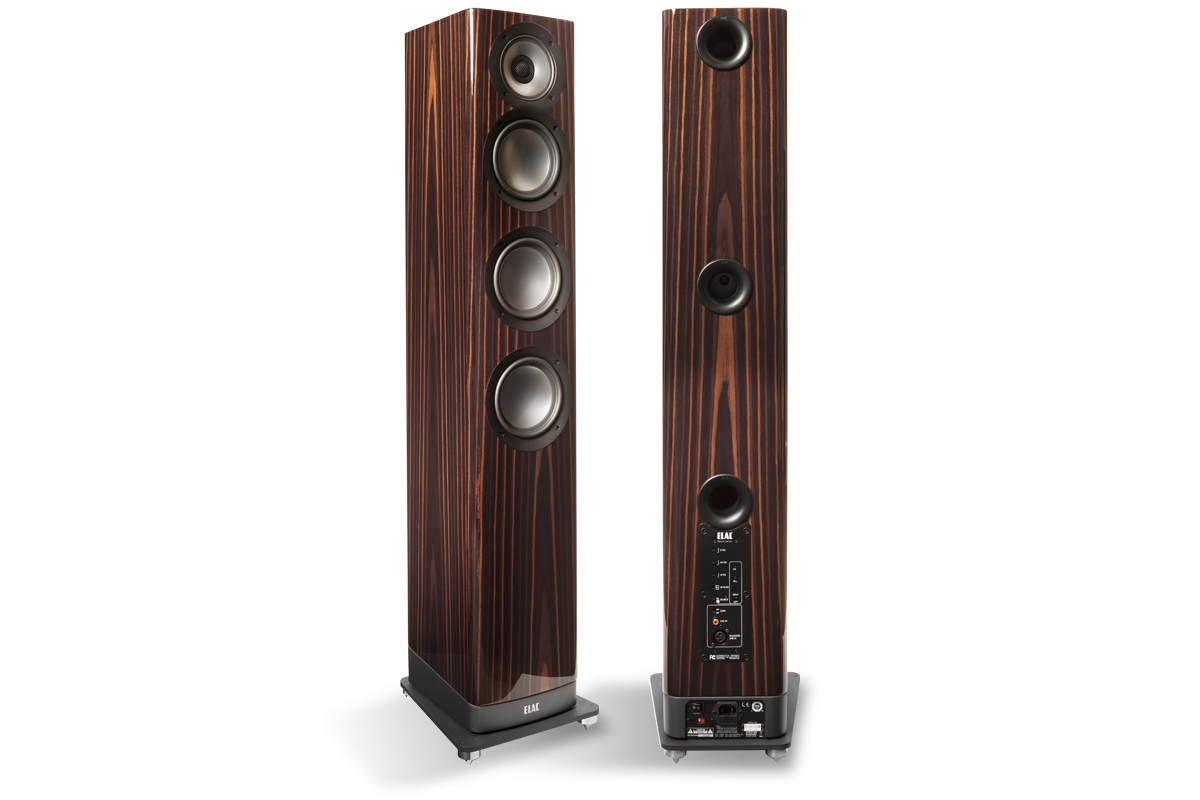
Both Navis speakers employ a 40W class-AB amplifier for the tweeter, a 100W BASH amp for the midrange, and 160W BASH amp for the woofers. Elac uses Bridged Amplifier Switching Hybrid (BASH) technology for the bass and midrange because BASH amps are more efficient than class-AB designs: they waste less power as heat. That’s obviously a critical consideration for an active speaker. The tweeter requires very little average power, so heat dissipation is less of an issue.
Elac’s Navis speakers are available in three high-gloss finishes: Gloss White, Gloss Black, and Gloss Ebony Emara. My review samples sported the Gloss Black finish, and they were gorgeous. But I've had samples of Navis speakers in all three finishes in my home, and they're all impeccable. However, the Gloss Black and Gloss Ebony finishes do show fingerprints. And the tops of the speakers are flat -- make sure guests don’t rest cocktail glasses on them if you want to prevent water rings. The front baffles have beveled vertical edges, and the side panels taper gracefully inward toward the rear. At the bottom is a contrasting gunmetal-gray section that houses the electronics. There are no removeable grilles, but the tweeter is protected by a metal screen.
Included with the ARB-51 is a heavy cast-metal base that screws into the bottom of the speaker, and floor spikes that screw into the base. There are also coin-sized, indented metal discs for protecting hardwood floors from those spikes. Each ARB-51 measures 40.35”H x 7.44”W x 9.45”D and weighs 46.3 pounds, including the metal base and floor spikes. The base itself measures 10”W x 10.5”D.
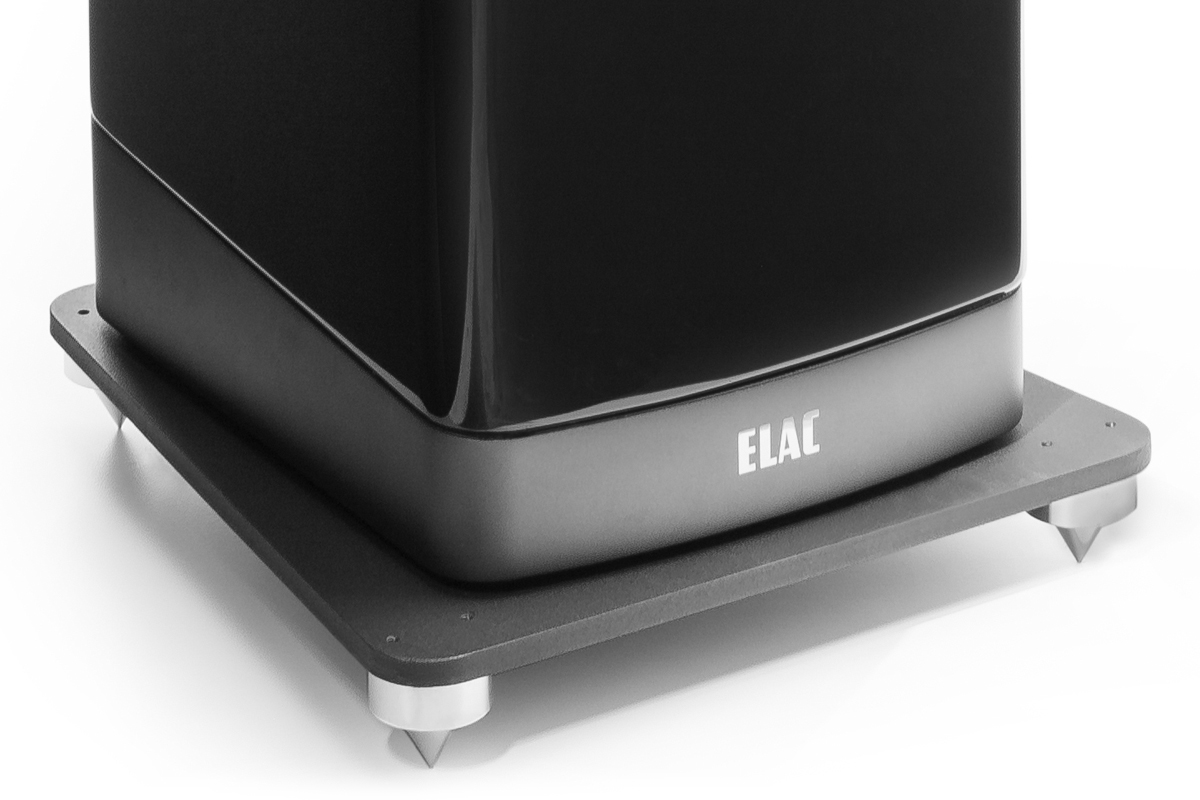
Unlike most of the active speakers I’ve reviewed for Simplifi, Elac’s Navis models are analog designs. As in all active speakers, the crossover is ahead of the amplifiers in the signal path. But analog active speakers use filters with capacitors, inductors, and resistors -- just like passive speakers. In active speakers, however, parts with lower voltage ratings can be used, since the crossover is receiving a line-level rather than speaker-level signal.
There are tradeoffs between analog designs like Elac’s Navis series, and DSP-based digital designs such as KEF’s LSX and LS50W. Besides implementing the crossover in DSP, many digital active speakers -- including the two KEFs -- use DSP for other functions, such as room-boundary compensation.
Analog active speakers have their own advantages, notes Andrew Jones, Elac’s vice-president of engineering. As Jones observed when I interviewed him earlier this year for Simplifi, analog designs permit more scope for upgrades. “With many active designs for the hi-fi market, everything is packaged into the product: amplification, DSP, analog-to-digital conversion (for the analog input), wireless networking, and all the DACs. You’ve got ultimate simplicity, but you’ve limited the baseline sound quality from the system. That’s a valid approach for many new listeners. They don’t want complication. They just want something that works.
“That’s a step too far for some traditional audiophiles,” Jones continued. “I wanted to give the Navis speakers useful simplicity, but also useful upgradability. If you improve your preamp, DAC, or turntable, you improve the sound -- as long as the electronics embedded inside the speaker are sufficient to show upstream improvements.”
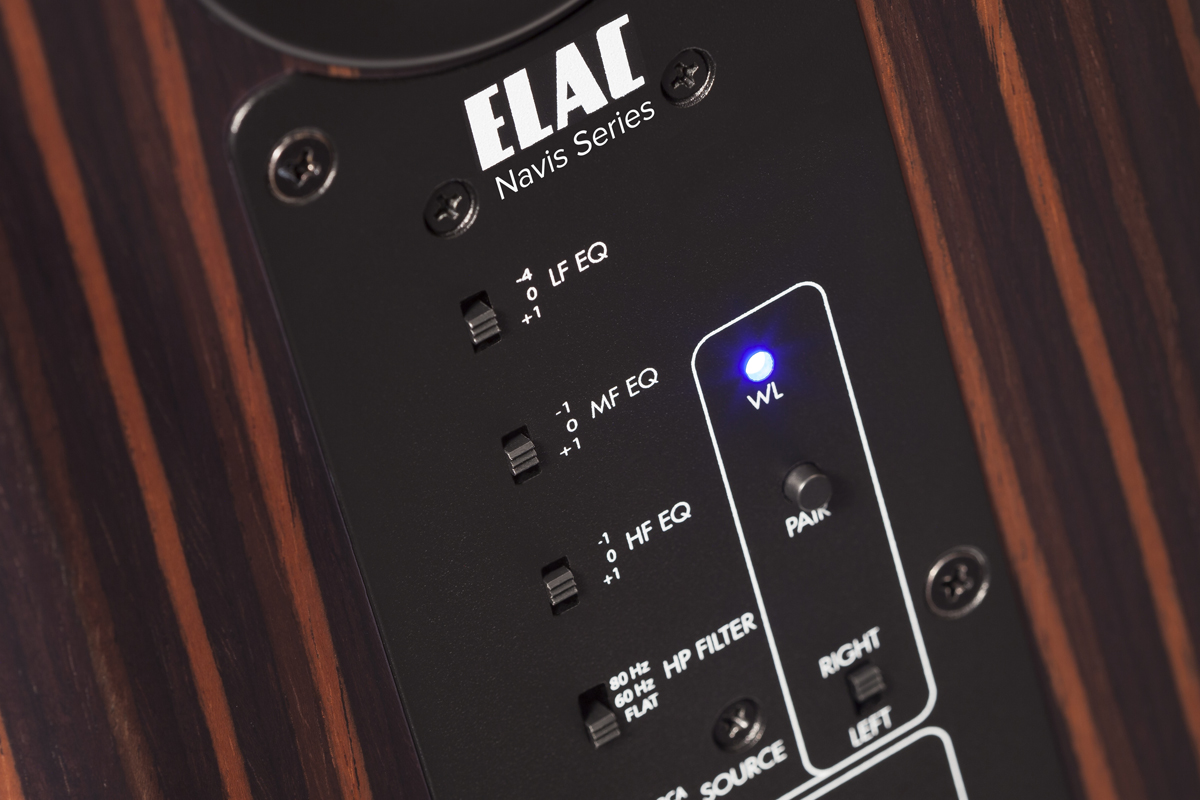
Both Navis models have equalization switches on the rear panel that let the listener compensate for speaker placement and room acoustics: one each for the lows (LF EQ), mids (MF EQ), and highs (HF EQ). There’s also a high-pass filter, with Flat, 60Hz, and 80Hz positions, for applications where a subwoofer is being used, and a gain switch to set input sensitivity.
The ARB-51 and ARF-51 have both balanced (XLR) and unbalanced (RCA) line-level inputs. They can also be paired with Elac’s Discovery Connect wireless transmitter ($399.99), which transmits digital audio at 16-bit/44.1kHz via Elac’s proprietary AirX2protocol.
Setup
After unboxing the Navis ARF-51s, my next task was to invert them and screw on their metal bases and spiked feet. Then I placed the speakers to either side of the faux fireplace in my living room, where my stand-supported Dynaudio Focus 200 XDs normally sit. My setup permits little flexibility in speaker positioning, but I did experiment a bit, and found that the Elacs sounded best from the same spots the Dynaudios do, describing a 7’ equilateral triangle with my listening seat: an end cushion of my sectional sofa. The backs of the enclosures were 16” from the wall behind them, and the speakers were toed in slightly toward the listening position. As with the Focus XDs, toeing in the speakers tightened up the image and optimized clarity.
I also experimented with the EQ switches on the backs of the ARF-51s. Most of the time, I preferred the sound of the ARF-51s with their LF, MF, and HF EQ switches set to flat, but there were a few occasions where these switches proved useful.
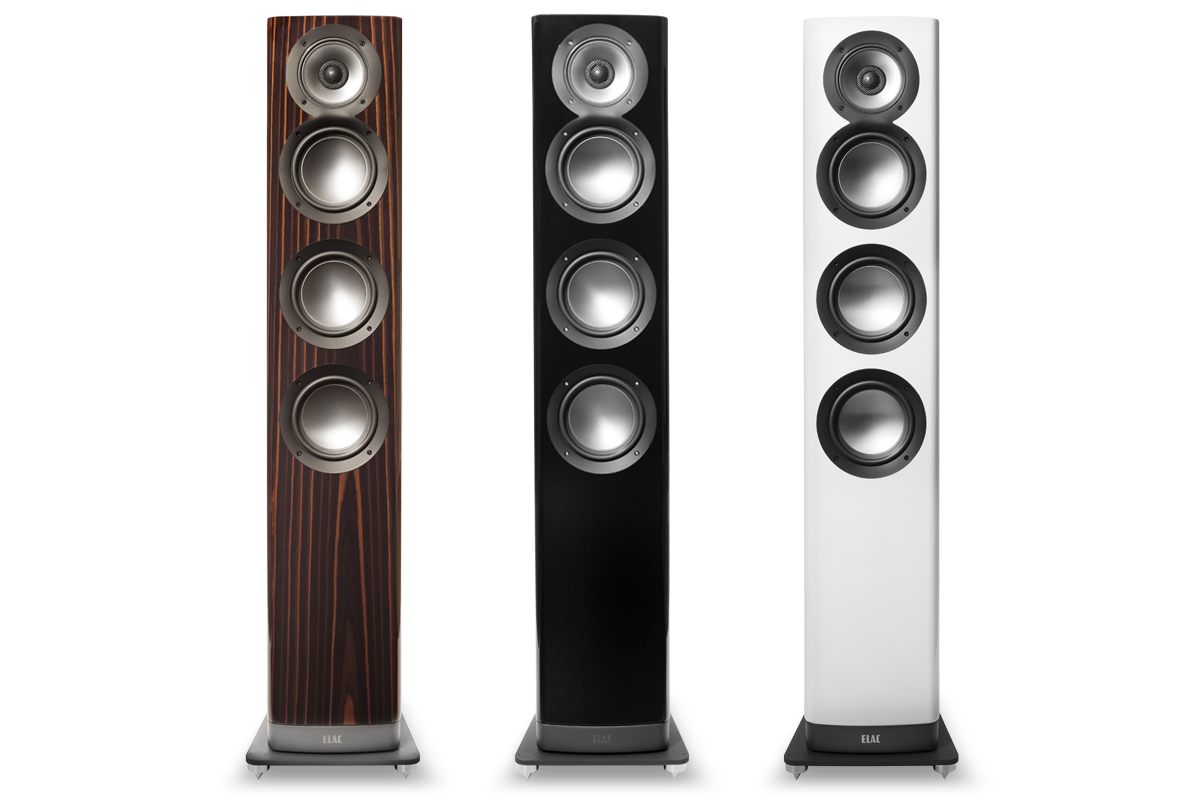
For example, on one of my favorite albums, Somewhere by the Keith Jarrett Trio (24-bit/96kHz ALAC, ECM/HDtracks), I found Gary Peacock's upright bass a bit too boomy. I suspect that room placement has a lot to do with this. The -4dB LF setting cured the problem, but trimmed bass too much for my liking. Following a suggestion that Jones made following my review of the ARB-51s, I set both MF and HF switches to +1dB. As Jones explained in his e-mail, "This is exactly equivalent to setting the bass at -1, just the overall level sensitivity is increased by 1dB." When I wanted to trim the bass a bit, this setting did the trick for me. However, in my room, I think I'd just go the set-and-forget route, and leave everything at flat.
The source for most of my listening was my Bluesound Node 2i streaming preamplifier ($499), connected to the ARF-51s with AudioQuest Mackenzie interconnects (RCA): 2m for the right-channel speaker, next to the Node 2i, and 5m for the left-channel speaker, on the far side of the fireplace.
I streamed music from Tidal and Qobuz to the Elacs using the BluOS app running on an iPad Mini and an LG G7 ThinQ smartphone. The Node 2i can function as a Roon endpoint, so I also used Roon to stream from the digital music library on the Apple Mac Mini computer in my upstairs home office, and from Tidal and Qobuz.
Listening
The Navis ARF-51s delivered bass with impressive body, scale, and sense of ease -- in a different league from the two-way stand-mounts that normally grace my listening room. Of course, that was no surprise. The combined surface area of the ARF-51’s three 5.25” woofers is about twice that of a single 6.5” woofer. Coupled with the ARF-51’s large enclosure, that means its woofers are operating in their linear region more of the time.
I was just as impressed with the ARF-51’s dynamics, both micro- and macro-. When I reviewed the Navis ARB-51 in April, I commented on its ability to change volume on a dime, with a seemingly infinite range of gradations from loud to soft. The ARF-51 shared that characteristic but could play louder, with significantly less compression and congestion. I continually marveled at their natural dynamics and superb articulation. On solo guitar and piano music, the initial attacks were fast, but not overdone, and the decays beautifully extended. Rapid runs were beautifully resolved.
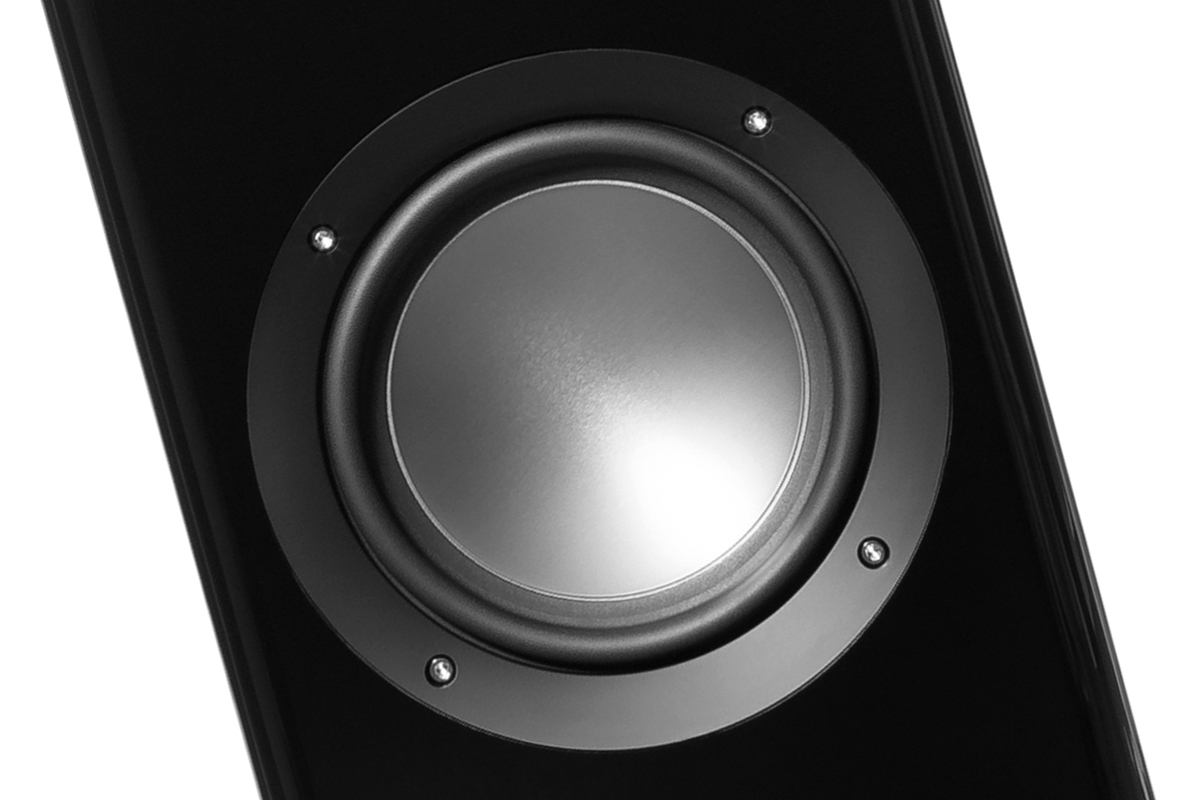
My main criticism of the Navis floorstanders is that sibilants and consonants could sound a bit hot, especially with women’s voices. This was brought out by Youn Sun Nah’s cover of Tom Waits’s “Jockey Full of Bourbon,” from her album Voyage (24/88.2 FLAC, ACT Music/ProStudioMasters). Nah has impeccable diction, and in this track her hyper-enunciation and whispery snarls convey a sense of menace. Through the ARF-51s her sibilants and snarls had a slightly hard edge, and were a little divorced from her vowels.
I noticed this problem with other recordings -- for example, Patricia Barber singing “The Wind Song,” from her album Smash (24/96 ALAC, Concord Jazz/HDtracks). Recording engineer Jim Anderson does stellar work on Barber’s albums, so I find this telling. Similarly, the breathy, Marilyn Monroe-ish vocalizing of the Webb Sisters, singing backup in “Different Sides,” from Leonard Cohen’s Old Ideas (16/44.1 ALAC, Sony Music), sounded a little too papery through the ARF-51s.
But I also played many recordings of men’s and women’s voices in which sibilance didn’t sound overpronounced. For example, Chris Thile’s voice in the quiet ballad “I Cover the Waterfront,” from Chris Thile & Brad Mehldau (24/96 FLAC, Nonesuch), sounded completely natural, and the Navises’ effortless reproduction of his expressive dynamic shifts was breathtaking.
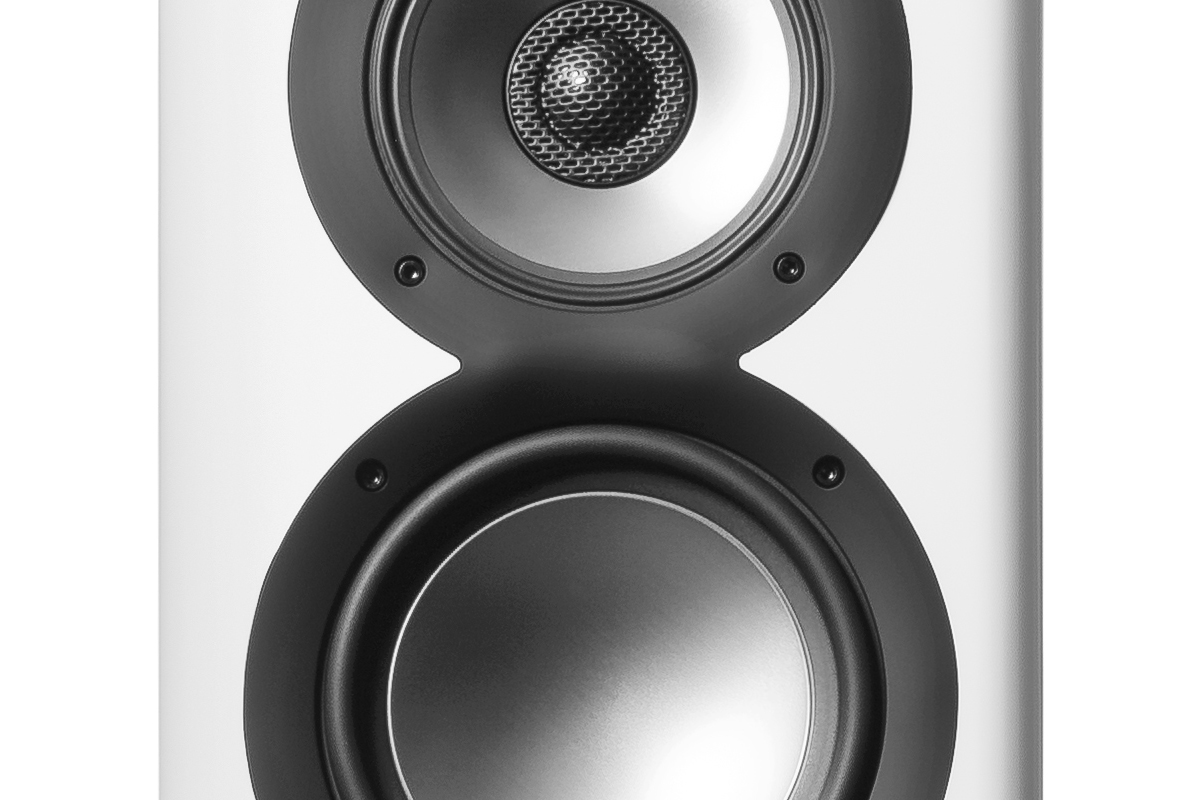
On albums where the sibilance issue arose, I tried using the -1 MF and HF equalization settings, combined and separate. This provided only slight relief from the excessive sibilance, at the cost of reduced overall sparkle and presence. Even on the Youn Soon Nah album, I preferred the flat settings.
Other than hot sibilants, I found every aspect of the ARF-51s’ rendering of “Jockey Full of Bourbon” completely involving. The speakers tracked Nah’s expressive modulations wonderfully, and her vocal timbre was consistent and natural. With percussionist Xavier Desandre Navarre playing the bongos, there was a clear sense of human hands striking skins stretched over wood. Lars Danielsson’s double bass was wonderfully taut and tuneful, and Ulf Wakenius’s electric guitar was alternately twangy and crunchy -- and always menacing. Each musician occupied a clearly defined position on a wide soundstage.
What about the bass? You might not think of harp music as a good test for bass response, but you’d be wrong. The bottom string of a pedal or concert harp is tuned to three octaves below middle C -- about 32Hz. The harp’s subtly quick attacks and long sustains can shine a merciless light on bass bloat or boom.
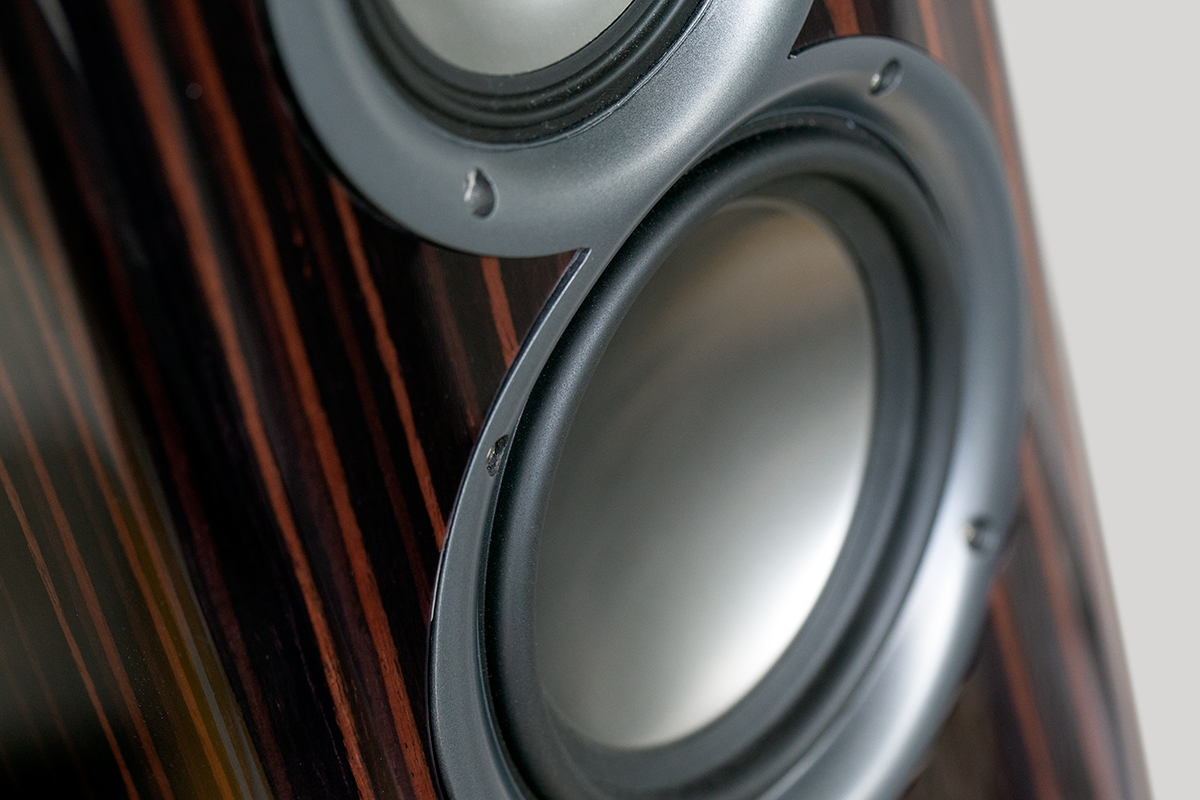
No such problems emerged with the ARF-51s playing a wonderful album of music by Philip Glass, transcribed for harp by Lavinia Meijer and performed by her (24/192 FLAC, Channel Classics). The Poet Acts, from Glass’s film score for The Hours, is played mainly in the harp’s lower strings, with abundant use of pedaling. Through the ARF-51s the pedaled lower strings sounded deliciously resonant, with decays that went on seemingly forever -- and no bloat to spoil the effect. When Meijer plays lower and higher octaves simultaneously, the richness of the lower notes never overwhelmed articulation of the higher notes -- I could always appreciate her fingering on the upper strings. In passages scored for the middle and upper strings, the Navis floorstanders reproduced her subtle attacks wonderfully.
For most people, a speaker’s reproduction of drums and bass, whether acoustic bass or electric bass guitar, are more meaningful tests of low-frequency performance than the concert harp. The ARF-51s proved their mettle in When Will the Blues Leave, a recent release of a 1999 concert in Lugano, Switzerland, by pianist Paul Bley, double bassist Gary Peacock, and drummer Paul Motian (16/44.1 FLAC, ECM/Qobuz). It’s a wonderful recording of a great concert, with lots of drum and bass solos, and great piano playing by Bley.
“Moor,” a Peacock composition, begins with a long bass solo, and it sounded fantastic through the ARF-51s -- deep, impactful, woody. When I cranked up the volume, the ARF-51s pressurized my downstairs living area (living room, dining room, adjoining hallway) with impressive ease. In “Mazatlan,” a Bley composition, I was wowed by the boldness with which the ARF-51s rendered Motian’s kick drum -- it was like a controlled explosion. The snares, with excellent snap, and cymbals, with satisfying sheen, were just as satisfying. With their wonderful midrange clarity and fast dynamics, the ARF-51s beautifully highlighted Bley’s dazzling staccato attacks and subtle legato phrasing.
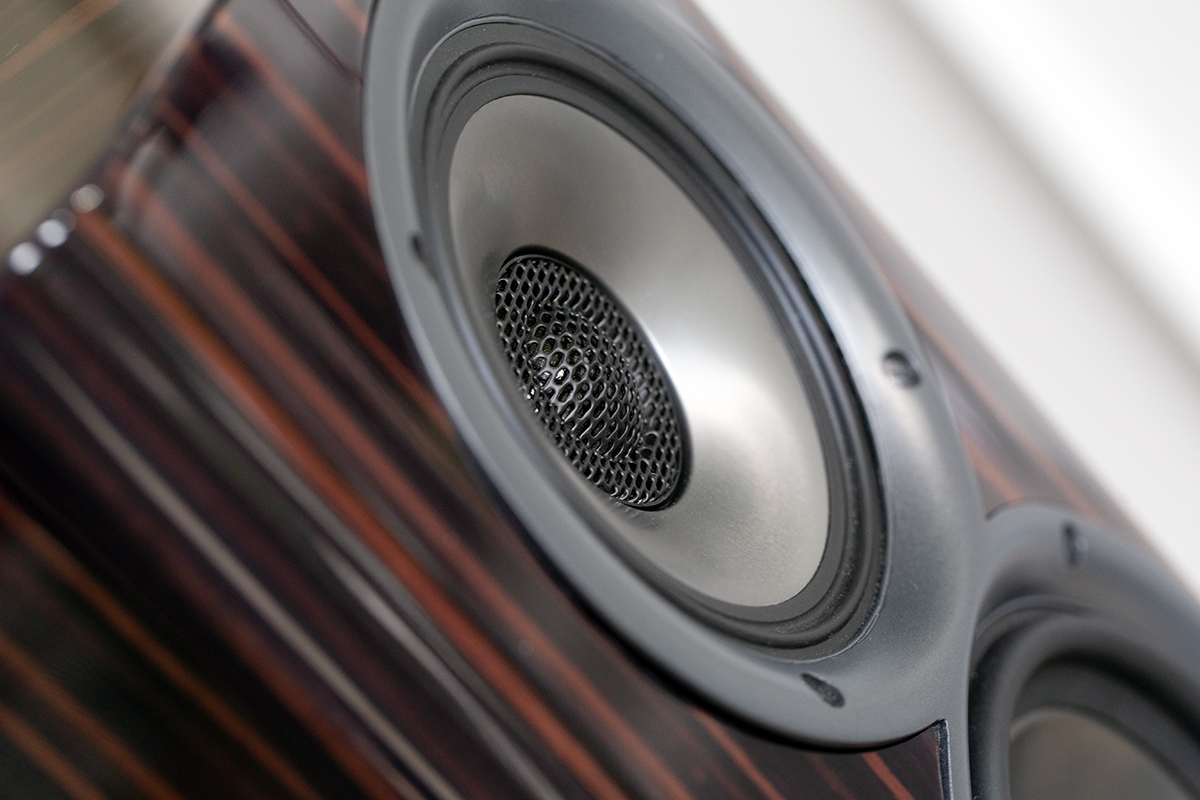
I also loved what the Navis floorstanders did with orchestral music, such as the New York Philharmonic’s acclaimed 1973 recording of Béla Bartók’s Concerto for Orchestra under Pierre Boulez (DSD64, Sony Masterworks). The ARF-51s presented the NYP on a wide, deep soundstage, with instrumental groups very well differentiated. Instrumental timbres were consistently ideal, or very close to ideal.
During the brooding opening of the first movement, Introduzione, the double basses and cellos had a wonderful breathy, woody quality. The basses had a real authority, providing the music with a satisfyingly warm foundation. When the violins quietly entered, they sounded shimmery and mysterious. Just before the three-minute mark, the drama ramps up markedly -- the ARF-51s impressively tracked the rapid dynamic shifts. With delicate timpani strokes, I had a good sense of sticks hitting skins; with more forceful strokes, a sense of power and authority, and an absence of overhang. In the many quiet interludes, woodwinds and harp arpeggios appeared seemingly out of thin air, each note beautifully articulated.
Upgrade path
To assess Andrew Jones’s claim that the ARF-51s can show off improvements upstream of them in an audio system, I swapped out the Bluesound Node 2i for a Lumin T2 network streamer ($4500, review pending), which has maximum resolutions of 32/384 PCM and DSD512. I connected the T2 to the ARF-51s’ balanced inputs with 2m-long Argentum Acoustics Mythos balanced interconnects (XLR).
With the title track, an Ornette Coleman composition, of the Paul Bley Trio’s When Will the Blues Leave, there was more space around the instruments through the Lumin streamer, and they were more firmly embodied in the stereo image. Motian’s cymbals and hi-hat had more sheen and less sizzle, his kick drum more impact and less overhang. Bley’s staccato attacks sounded sharper, faster, and more dramatic, and decays were longer. The Lumin T2’s sound was more nuanced than the Bluesound Node 2i’s, and more involving and exciting. The Node 2i seemed a bit veiled and confused by comparison, with everything more mushed together.
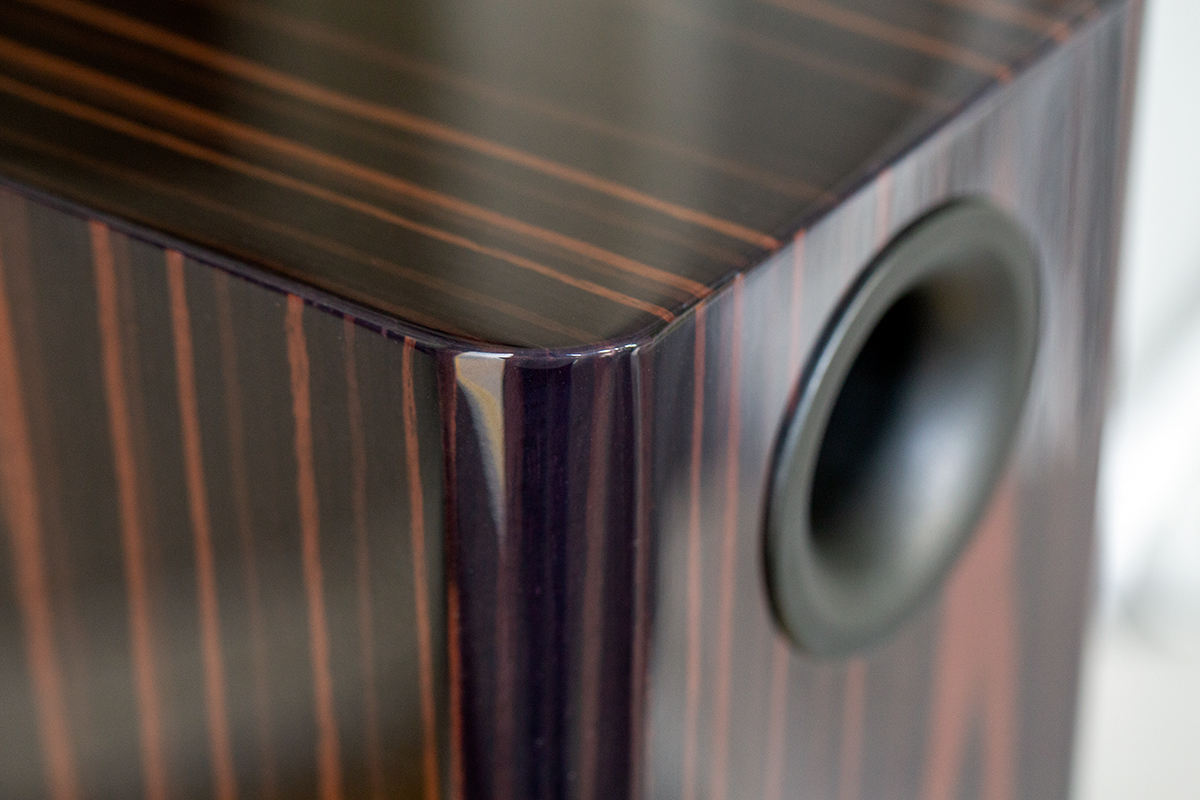
The Bartók recording made for an interesting comparison. I streamed the album from Roon, so the T2 could play it in its native format, DSD64; for playback through the Node 2i, Roon downsampled the recording to 24/176.4 PCM. Through the Lumin T2, the sound was noticeably more transparent. Violins were less steely and more shimmery, especially in loud passages. Brass had more bite but less glare. Double basses had more growl. Dynamics were noticeably faster.
As this comparison shows, the Elac Navis ARF-51 could indeed reveal improvements upstream.
Comparisons
A natural comparison for the Navis ARF-51 is its little brother, the Navis ARB-51. The specifications for these two active speakers are interesting: Elac claims a frequency range of 44Hz-28kHz for the ARB-51, and 43Hz-28kHz for the ARF-51. This is one instance in which the numbers definitely do not tell the whole story. While these specs differ by only 1Hz, the subjective difference was much bigger than that number indicates.
In “When Will the Blues Leave,” Peacock’s bass had less impact through the ARB-51s, sounding not only fainter but woollier. Especially in louder passages, the ARB-51s sounded more compressed, and more anemic, than their larger siblings.
On the Bartók recording, the Navis bookshelf model sounded lovely in the mysterious opening, with the same big soundstage as the floorstander. The bass viols were warm, but vaguer and muddier than through the ARF-51s; even in quiet sections, the ARF-51s sounded bigger and warmer. But in dramatic passages, it was no contest -- sudden orchestral swells were rendered more convincingly through the ARF-51s. The big crescendo at the end of the first movement sounded much more dramatic, and less compressed.
With the recording of music by Philip Glass transcribed for harp and performed by Lavinia Meijer, the ARB-51s sounded lovely -- but the ARF-51s sounded better. Through the stand-mounts, the harp’s lower strings weren’t as deeply resonant or as well controlled as through the floorstanders. This interfered with the reproduction of the subtleties of Meijer’s playing on the upper strings. So not only did the ARF-51s sound bigger and warmer than the ARB-51s, they sounded more articulate.
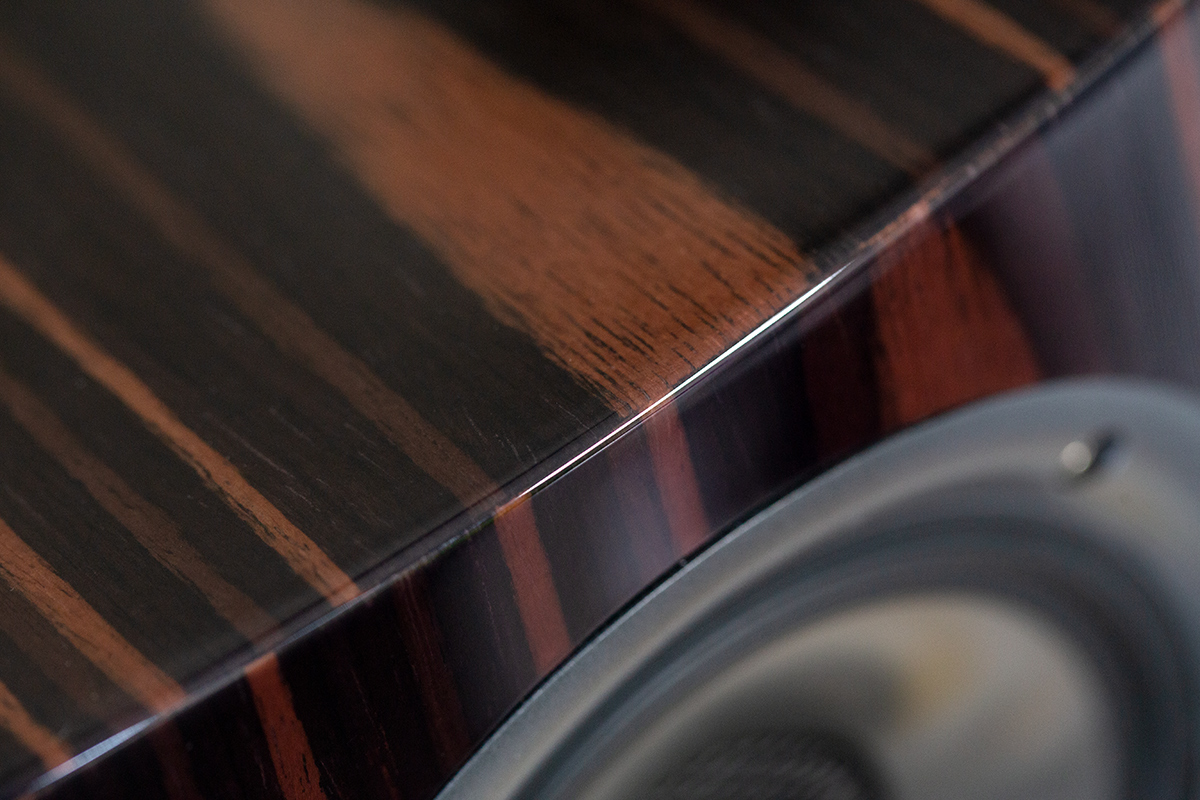
Naturally, I wanted to compare the ARF-51s with my Dynaudio Focus 200 XDs. With their upgraded firmware, the Focus 200 XDs are sonically identical to the newer Focus 20 XDs ($5999/pair in standard finishes, $6499/pair in premium finishes), which were reviewed by Al Griffin on this site in 2017, and received a Reviewers’ Choice award. The Dynaudios were a little smoother and easier on the ear; the Elacs were more dramatic and exciting.
Listening to Youn Sun Nah’s cover of Tom Waits’s “Jockey Full of Bourbon” through the Focus XDs, I was less bothered by the hot sibilants and snarly whispers, which now were more clearly artistic effects than sonic artifacts. Otherwise, I preferred the way the ARF-51s rendered Nah’s voice -- it was less recessed than it was on the Focus XDs. Through the Elacs, Desandre Navarre’s bongos had more snap, and Lars Danielsson’s bass had more impact and definition.
Gary Peacock’s bass in When Will the Blues Leave sounded a little muddier and less powerful through the Focus XDs than the Navis ARF-51s. Through the Elacs, Paul Bley’s piano had more heft in the lower octaves, and more sparkle and presence up top. The Elacs were faster, more dramatic. Paul Motian’s drum solos sounded bigger and more exciting, with a greater sense of sticks striking percussive surfaces.
In her recording of Glass’s music, the lower strings of Lavinia Meijer’s harp weren’t as deeply resonant through the Dynaudios, or as well controlled -- it was harder for me to appreciate her pedaling, and the decay of her notes into the ambience. The articulation of her playing in the upper strings was also better through the Elacs.
Conclusion
It should come as no surprise that a three-way floorstanding speaker can deliver bigger, more effortless sound than a compact stand-mount -- whether a three-way minimonitor such as Elac’s own Navis ARB-51, or a two-way like Dynaudio’s Focus 20 XD. Lean and mean will take you only so far. If you want big, exciting sound with deep, high-impact bass, you need to move air. You need to bulk up.
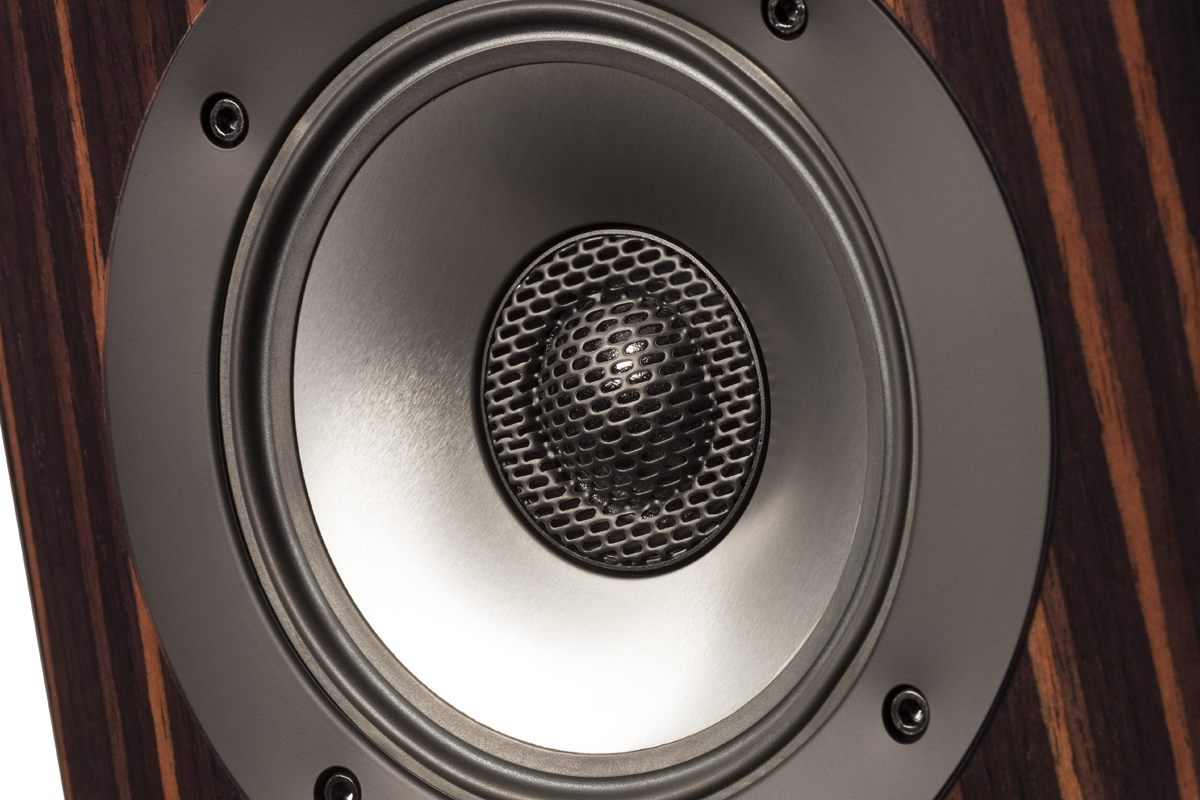
I enjoyed almost everything about Elac’s Navis ARF-51. During my listening, the pair of them delivered musical refinement combined with visceral excitement. I also came to appreciate the upgradability that their analog design affords.
For four pennies under four grand, I think the ARF-51s are a screaming bargain, especially when you consider that each speaker has built-in amplifiers with 300W total output.
Per Joni Mitchell, will I know what I’ve had when it’s gone -- when the time comes to send the ARF-51s back to their rightful owners? I won’t let that happen. I’m buying the review samples. You’ve just met my new reference speakers.
. . . Gordon Brockhouse
Associated Equipment
- Sources -- Bluesound Node 2i BluOS streaming preamp, Lumin T2 network player, both streaming from a modified, mid-2011 Apple Mac Mini computer running macOS 10.14.6 Mojave and Roon Core 1.6
- Active speakers -- Dynaudio Focus 200 XD, Elac Navis ARB-51
- Interconnects -- AudioQuest Mackenzie unbalanced (2m, 5m, RCA), Argentum Acoustics Mythos balanced (2m, XLR)
- Power cords -- Wireworld Stratus 7 (2m)
- Network -- Google Wifi three-node mesh network
Elac Navis ARF-51 Active Loudspeakers
Price: $3999.96 USD per pair.
Warranty: Three years parts and labor, cabinets, drivers; one year, electronics.
Elac Americas, Inc.
11145 Knott Avenue, Suites E & F
Cypress, CA 90630
Phone: (714) 252-8843
Website: www.elac.us
